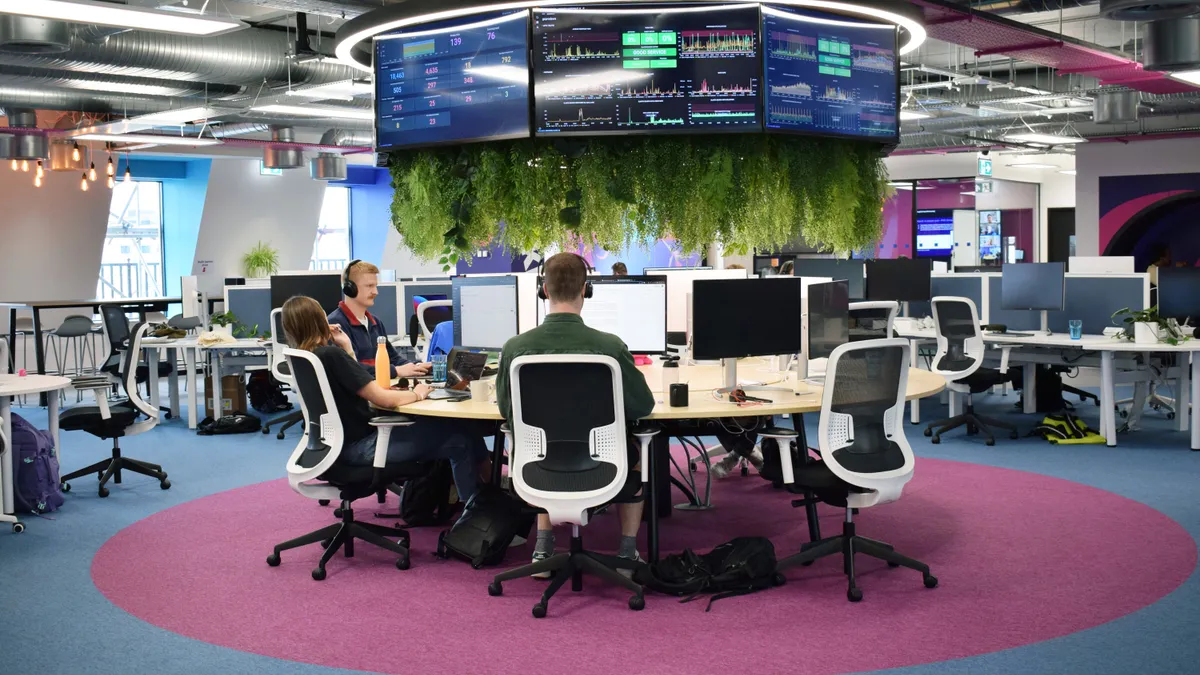Over the last 20 years, consumers have gotten used to having the world at their fingertips. Most industry sectors have had to shift lanes to keep up with digitalization and stay competitive in their respective markets; those determined to stay ahead of the curve need to continue to innovate.
It’s easy to forget how recently telecommunication companies evolved from only providing dial tone to partnering with a vast array of other businesses to expand their offerings. Today when you purchase cable TV, you can get a phone line and any number of mobile packages, or subscribe to streaming services.
Energy utilities have so far remained insulated from such transformation. For a long time, people haven’t expected anything new; in fact we were happy to just be able to switch on a light or turn on the oven.
As an increasing number of consumers adopt distributed energy resources into their homes – such as solar panels, EV chargers, or home batteries – consumer expectations and market dynamics are changing in tandem. We can now choose who we want to rely on when it comes to buying, servicing, and optimizing these new products.
Utilities are extremely well placed to participate in, and benefit from, this industry wide transformation. They have the potential to provide unparalleled experiences for those customers who are looking to get in on the clean-tech boom (and improve experiences for their more traditional customers in the process).
The good news is, the technology to make this change exists, with data as the key — giving utilities the ability to provide their customers with personalized offerings, tailored to their consumption and needs. A great example of this is the utilization of smart-meter data to provide new consumer products and tariffs based on actual energy usage. Creating EV tariffs that allow cheaper charging at off-peak hours, or selling back excess solar energy at peak hours becomes feasible, for utilities and customers alike, when leveraging available data.
The access to large scale, real-time data is what distinguishes today’s transformation of the utilities sector from the previous digitalisations of comparable sectors like telecoms or retail banking. Utilities are able to make much better informed iterative business decisions by constantly using data to validate or course-correct their engagement with their customers. Data-led utilities will stay ahead of the curve by empowering their teams closest to customers to make decisions. To unlock rapid, robust innovation, utilities would be wise to democratize their data. Once available to assist across the organization, access to data creates a more distributed and dissolved powerbase and accelerates decision making. Data-led decisions should not be consigned to strategy leads in a boardroom: true transformation is made possible when each team member is empowered to use good data to make better decisions.
Having decisions made across the business by those that are closest to their respective processes might intuitively sound risky, but in fact it is quite the opposite. Instead of developing extensive plans that span many months d, utilities can massively improve their innovation by continuously taking smaller, incremental steps, built around measured risks and constant adaptation to what the data shows. They can understand whether projects are worthwhile more quickly, and can still course correct, trusting that each iterative step can be rolled back if something goes wrong. If a particular idea doesn’t work that’s totally fine, a data-led approach will have led your business to an answer a lot faster than traditional methods and you won’t have lost months of planning.
Such an approach does require people who can interpret and use data to adapt in real time. This opens the way to new benefits, attracting young talent to an otherwise aging industry. People with the skills the industry needs most crave the type of autonomy that can only be afforded by organizations who operate in non-hierarchical, agile, data-driven ways. In the US alone, “400,000 employees in the energy sector are approaching retirement, expected to retire in the next 10 years.” As we move towards renewable energy targets and the acceleration of building new solutions, we need to think harder about how we attract and retain talent.
True transformation comes when utilities are able to move beyond the belief that speed makes people more likely to miss something or make more mistakes. The benefit gained in interacting fast and frequently with customers is higher than the risk mitigated through extensive upfront planning. The possibility of championing change in the energy industry comes when we accept that there is a need to co-create the future with our customers, and to have confidence that we will recognize when we are going down the right path. We can always refine further along the way, thanks to the data to which we have access.










